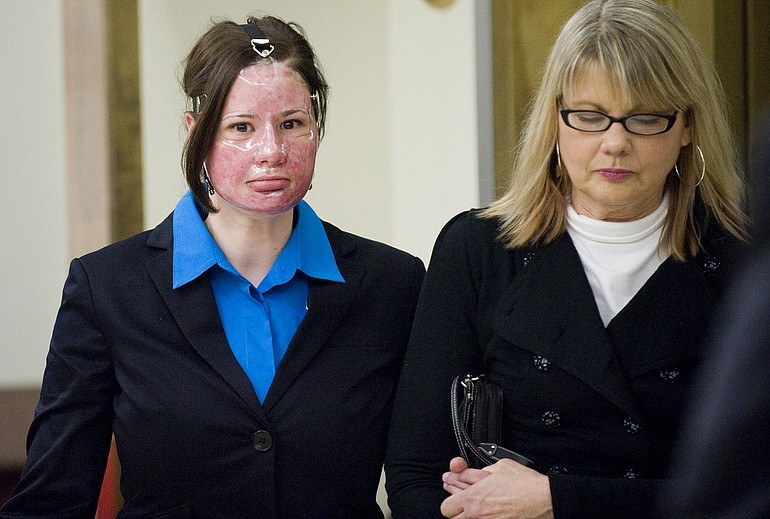o Aug. 30, 2010: About 7:15 p.m., bystanders find Storro crying with pain, her face burned, on a sidewalk near West Eighth and Columbia streets in Vancouver. Someone calls 911. Storro says a woman threw acid in her face, and that her rarely worn sunglasses saved her eyes from acid.
o Aug. 31: Vancouver police Detective Wally Stefan visits Storro in the Burn Center of Legacy Emanuel Medical Center in Portland. He notices that her burns are evenly distributed, with no splash patterns as from a tossed liquid.
o Sept. 2: Storro, her face wrapped in bandages, appears before TV cameras at the hospital. She tells reporters a black woman threw acid in her face and fled. In Vancouver, police are searching for the assailant and release a drawing based on Storro's input.
o Sept. 3: Over the next several days, donations pour in from across the U.S., soon to total more than $27,000.
o Sept. 9: The public learns of plan for Oprah Winfrey to interview Storro on her show. The plan will be dropped as suspicions arise.
o Sept. 10: The Columbian publishes a story asking police if it's possible Storro injured herself.
o Sept. 17: The public learns police searched the home of Storro's parents the previous day -- and Storro confessed to injuring herself and fabricating
the story someone attacked her.
o Sept. 18-19: Thousands ask why Storro did it. Some ask why Storro chose a black woman as her mythical attacker. Her father, Joe Neuwelt, saying he's shocked by her confession, says all donations will be returned. Many readers are angry, others sympathetic.
o Sept. 20 Prosecutors charge Storro with three counts of second-degree theft by deception, regarding the donations.
o Sept. 29 News camera crews, including from NBC's Today show and CBS's Inside Edition, mob Storro's first court appearance. She's receiving medical care, not in police custody.
o Jan. 7, 2011 Attorneys on both sides request mental-health evaluation of Storro. Judge approves.
o Friday, April 8 Storro pleads guilty, receives sentence of fine, repayment and community service.



